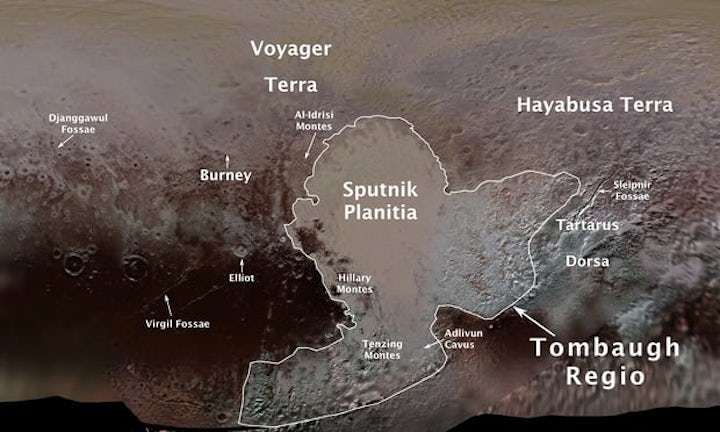A British schoolgirl who came up with the name “Pluto” for a newly-found planet in 1930 has been immortalised on the distant world by having a crater named after her.
On hearing of the planet’s discovery from press reports, 11-year-old Venetia Burney from Oxford proposed the name of the Roman god of the underworld to her grandfather, a librarian at the city’s Bodleian library. He dutifully passed it on to US astronomers where it was approved by Clyde Tombaugh, who had spotted the rocky body.
The Burney crater is one of 14 Plutonian features to receive an official name on Thursday from the International Astronomical Union, whose experts have worked for more than a year to approve titles put forward by scientists and members of the public.
A distinctive heart-shaped feature revealed in the breathtaking images captured by Nasa’s New Horizons mission in 2015 becomes Tombaugh Regio, while a large plain is named Sputnik Planitia in honour of the first space satellite launched by the Soviet Union in 1957.
Other features on Pluto, which the IAU has demoted to “dwarf planet” status, pay homage to underworld mythology. Tartarus Dorsa is a ridge named after Tartarus, the deepest, darkest pit of the underworld in Greek mythology; Sleipnir Fossa nods to the powerful eight-legged horse of Norse mythology that carried the god Odin into the underworld; and Virgil Fossae honours the Roman poet who depicted the underworld in his Aeneid and was later represented as Dante’s guide through hell and purgatory in the Divine Comedy. A deep dent in the surface is named Adlivun Cavus after Adlivun, the underworld in Inuit mythology, and Djanggawul Fossae is a network of depressions named after a trio of divine siblings from indigenous Australian mythology.
The mountaineers Sir Edmund Hillary and Tenzing Norgay lend their names to the Tenzing Montes and Hillary Montes mountain ranges on Pluto, with another series of peaks, Al-Idrisi Montes, honouring Ash-Sharif al-Idrisi, an Arab mapmaker and geographer.
Two large regions on Pluto’s surface are named Hayabusa Terra and Voyager Terra after Japanese and US spacecraft, while a second crater is named after James Elliott, a researcher at MIT who pioneered methods that allowed astronomers to study Pluto’s thin atmosphere and the rings of Uranus.


